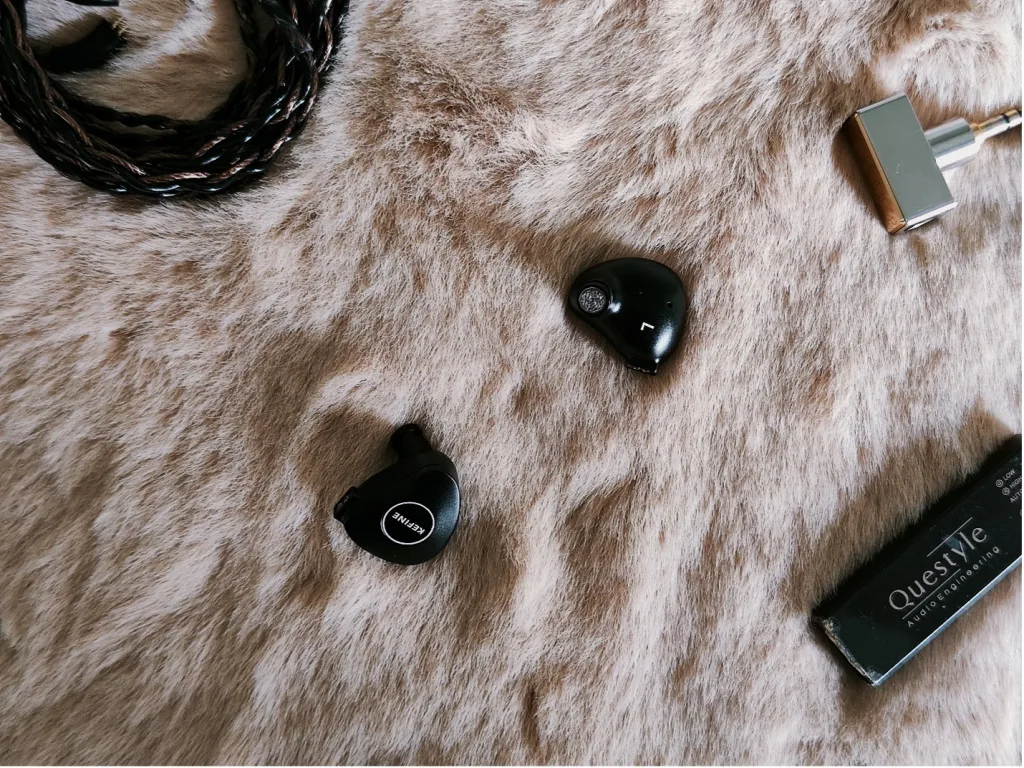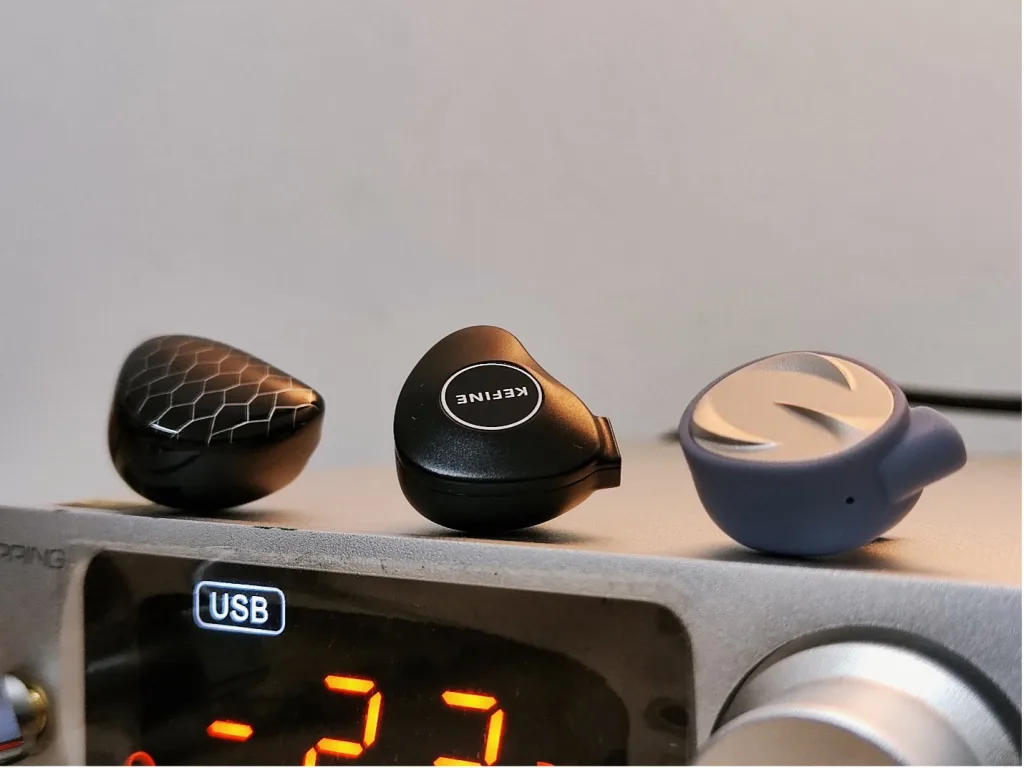Introduction
Another day, another planar magnetic driver IEM appeared. To liven up the current “planar magnetic IEM war”, a brand-new company, Kefine from China, took a bold move to produce a planar magnetic driver IEM called the Klanar as their first ever product. Based on insider information, the creator of Kefine was previously an employee of SIVGA, a well-known headphone company in the audio community. Therefore, I am excited to see how the Klanar performs, especially at a fairly affordable price of 120 USD for a planar magnetic-based IEM.

Packaging & Accessories
Klanar has simple box packaging in general, although one thing to note is that it’s quite annoyingly hard to unbox the internal top cover. Inside, I was greeted with the IEM itself and a small, hard carrying case with eartips placed inside. The cable is already pre-installed on the IEM, and it’s a dual-copper OFC and SPC litz cable that gets the job done. Meanwhile, the stock eartips included are small and wide-bore eartips for bass and transparent sound profiles, respectively. Quality-wise, they’re alright, but it’s quite hard to differentiate between them since they’re all the same color. I would recommend you use your favorite third-party eartips for better quality and comfort. In terms of shell design, they are very light, small, and made of sturdy aluminum alloy. Most importantly, they are very comfortable to wear and can fit my ears for an infinite period of time without fatigue.
Specifications
- Driver: Planar magnetic (14.5mm diameter)
- Frequency response: 20 Hz – 40 kHz
- Sensitivity: 105 dB ± 3 dB
- Impedance: 16 Ω ± 15%
- Cable length: 1.2mm ± 0.2mm
- Plug size: 3.5mm SE or 4.4mm BAL (this unit)
- Weight: 12.6 g
Retail Price & Where to Get
Thank you Stars Picker Audio Library 摘星知音 & Kefine for providing us with the Kefine Klanar for a review.
Links to Purchase :
Stars Pickers Audio Library Official Website : 25% discount until 29th Nov 2023
Stars Picker Audio Library Shopee: 13% off and 12% cashback voucher
Source Pairing
- Android 13/ Windows 11 > DDHifi TC35B/ Questyle M12/ Topping DX3 Pro+ > Kefine Klanar
Test Tracks
- Cold Little Heart Live Session – Michael Kiwanuka [YT]
- Love and Hate Live Session – Michael Kiwanuka [YT]
- Yes I Do – L.A.B
- Everything I Do – Martin Miller
- Uneasy – Jon Batiste ft. Lil Wayne
- Faculties Of The Mind – Butterfingers
- Drive Home – Steven Wilson
- Topik Semalam – Kunto Aji
- Comfortably Numb (Live at Pompeii 2016) – David Gilmour
- Little Blue Mahogany Session – Jacob Collier [YT]
- Shakti Tiny Desk Concert – NPR Music [YT]
- You And I – Jacob Collier
Tonality
Klanar has a classic v-shaped sound signature, which means it has boosted bass, especially the mid bass, as well as boosted upper midrange. While the lower mid is slightly held back. This is a well-known tuning used by most brands to give their customers or listeners that classic, fun, energetic sort of sound. In my view, it’s a great strategy by Kefine to utilize this sort of sound for their first product so that they can impress as many average consumers as they can and build their reputation as a new player in the industry. For a more hardcore audiophile who prefers a neutral profile, this may not be your cup of tea.

Bass
Starting from the subbass, the subbass has a noticeable extension, but it’s not so prominent and can’t be physically felt, which I think is due to the limitations of the planar magnetic driver. Mid-bass, however, is boosted slightly above normal quantity, making Uneasy by Jon Batiste feat. Lil Wayne sounds perfectly fun and satisfying to hear. With Faculties Of The Mind by Butterfingers, there was good bass quantity compensation, as the recording of that record is quite lean-sounding. Overall, the Klanar has a fast but satisfying amount of bass slam, especially for rock and pop music. However, timbre-wise, I could notice the planar driver-type bass slam, which decays less into the center like with a dynamic driver but rather resolutely spreads out.
Midrange
For a v-shaped tuning, the lower mid of the Klanar suffered the most recession compared to the upper mid. Sometimes I could feel that low-note vocals lacked some substance to their voices while accompanied by a slight, sharp vocal tone due to their 2 kHz peak, for example, with the voices of Michael Kiwanuka and Jacob Collier in Cold Little Heart Live Session and You and I, respectively. However, the electric guitar, for example, in Everything I Do by Martin Miller, had good focus and forwardness but never felt fatiguing. In my opinion, the Klanar has a good midrange sound in reality, despite being a little bit scary if one looks at the frequency response graph.
Treble
I believe that Kefine’s intention was to tune a smooth treble with the Klanar. And I think they have achieved that in a pleasant way, since I couldn’t detect any sibilance or weird peaks that could contribute towards weird timbre with the likes of cymbals, percussions, and such. The timbre is generally acceptably natural for a planar magnetic driver IEM. The trade-off is that the upper treble isn’t that extended to give a sense of air and minute micro-details. In the example in Little Blue Mahogany Session by Jacob Collier, Jacob’s voice lacked a final bit of that sense of airiness in his voice as well as of that ambient air in the cathedral. Don’t be disappointed, though, just yet, because you’ll certainly gain that planar “zing” quality, resulting in still adequate brightness for strings and violins.

Soundstage & Imaging
The Klanar doesn’t have an exemplary soundstage size, like most IEMs don’t anyway. However, the imaging presence is well established in all three-dimensional axes, for example, in Yes I Do by L.A.B. As previously discussed, center imaging was not the Klanar’s greatest strength, which reduced the ultimate imaging accuracy a little bit. For the price, I think the performance is still quite good because the Klanar still has the edge of utilizing that planar magnetic driver technical capability.
Resolution & Separation
This is where I was impressed by the Klanar. The resolution and instrument separation are very good for the price. Again, the Klanar has that technical advantage, such as fast transient and resolution, due to the planar magnetic driver as opposed to the dynamic driver. Therefore, at this price point, complex music can be played quite nicely here. For example, Drive Home by Steven Wilson can be played well here, while Shakti Tiny Desk Concert by NPR Music proved the excellent resolution and texture of the mridangam and tabla instruments in that live recording. Hidden details like hidden crowd voices, such as in Comfortably Numb Live at Pompeii 2016 by David Gilmour, although they couldn’t be extracted by the treble tuning, could still be heard, possibly due to the driver’s capability.

Drivability & Synergy
You shouldn’t have any problem driving the Klanar since they are designed to be efficient and sensitive. Any sort of source can do the job, though I can agree that for planar-based IEM, they can scale better with better DACs and AMPs, but not necessarily. In terms of synergy, the Klanar can synergize with any sort of sound source. But the way I see it, as a v-shaped IEM, I prefer a neutral-sounded source to pair with the Klanar.

Comparison
TinHifi P1 Max:
The TinHifi P1 Max is a similarly priced planar magnetic-based IEM that was released a year ago. P1 Max has less bass quantity, especially the subbass, but the mid-bass has better tactility when it comes to bass kick. They sounded cleaner as well, with a brighter and slightly better treble extension, although with the caveat of being more sibilant. The midrange is less recessed compared to the Klanar, and thus vocals and instruments such as piano and guitar are clearer. In addition, P1 Max has better technicalities such as resolution, detail retrieval, and soundstage, although not by much. Overall, the Klanar is warmer and more fun-sounding, with better timbre and sibilance control, whereas the P1 Max is a tiny bit more technical, with a more neutral and brighter profile.
Letshuoer S15:
One of the most anticipated planar magnetic IEMs, but at 300 USD. The Letshuoer S15 has a greater overall bass, be it quantity or quality. Perhaps there’s also a bit of bass bleed in the mids, making it warmer, which can also be a bother to some, unlike the Klanar. However, in terms of quality, the gap is high between them, where S15, which is equipped with a passive radiator, has greater attack, texture, and speed. Midrange is plain better as well, with better tuning such as vocal forwardness and peak control. Herein, it is obvious that the resolution and detail of the S15 appear to be better. The treble is somewhat similarly smooth, but the S15 has an edge for being more complete in the lower treble and upper treble extensions. Mid-treble tuning, which contributes to timbre such as cymbals, also sounds more natural and crisper with the S15. Stage and imaging are also one step above with the S15. Therefore, S15 is much more technically capable with a more polished tonality, but note that they are also priced in an entirely different price range, which is justifiable. In summary, both are good IEMs playing at their respective price points.
Audiosense DT200:
Not a planar magnetic driver IEM but rather an out-of-production 2 balanced armature (BA) driver IEM released 3 years ago at a similar price tag. The DT200 is a neutral-warm-sounding IEM. The bass isn’t as potent as the Klanar, which can be noted occasionally. The midrange also isn’t as clean and well separated from the bass as the Klanar. Treble is more sibilant and spicier with DT200 and not as extended as the Klanar. Soundstage is about the same for both, but imaging is slightly better with Klanar. Resolution, separation, and transient are unmatched with the Klanar.

For Whom?
The Kefine Klanar is an IEM for someone who wants to delve into planar driver sound quality bandwagon but still seeking musical sonic sensation. It’s a perfect IEM who listens to genres such as pop, R&B, rock, metal, and such at an affordable price, in my opinion, since generally a good planar-based IEM usually comes at a much higher price tag. For jazz listeners, I would opt for single dynamic driver IEM instead, for a more authentic timbre experience. But for those who are looking for planar sound character, this set is an easy recommendation.
Conclusion
In a nice restaurant, you will usually be greeted with an appetizer to give you a good impression of the dining experience. Similarly, in this context, Kefine has produced a pleasant entrée for us so that we can look forward and see what they can bring to the table again in the future. The Klanar for the price tag that I consider affordable for a planar magnetic-based IEM, it’s a great fun, toe-tapping, and musical yet technically capable-sounding IEM for you to consider as your next choice pair of earphones.




